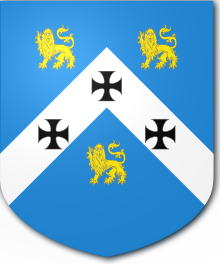Fowler of Islington (1628)

Created in the Baronetage of England. [3]
- Thomas Fowler, 1st and only Baronet (1586–1656) Extinct on his death
Four baronetcies have been created in the surname of Fowler, all of which are now extinct.
The Baronetcy of Fowler of Islington in the County of Middlessex was created in the Baronetage of England on 21 May 1628 for Thomas Fowler and was extinct on his death in 1656.
The Baronetcy of Fowler of Harnage Grange , in the County of Salop was created in the Baronetage of England on 1 November 1704 for William Fowler The last baronet died in 1771.
The Baronetcy of Fowler of Gastard House in the Parish of Corsham in the County of Wiltshire and of Bruce Grove in the Parish of Tottenham in the County of Middlesex was created in the Baronetage of the United Kingdom [1] on 1 August 1885 for Robert Nicholas Fowler, a Member of Parliament
The Baronetcy of Fowler of Braemore , in the County of Ross was a title created in the Baronetage of the United Kingdom on 17 April 1890, [2] for John Fowler, civil engineer for the Metropolitan Railway and the Forth Railway Bridge.

Created in the Baronetage of England. [3]

Created in the Baronetage of England. [4]

Created in the Baronetage of the United Kingdom.

Created in the Baronetage of the United Kingdom. [5]